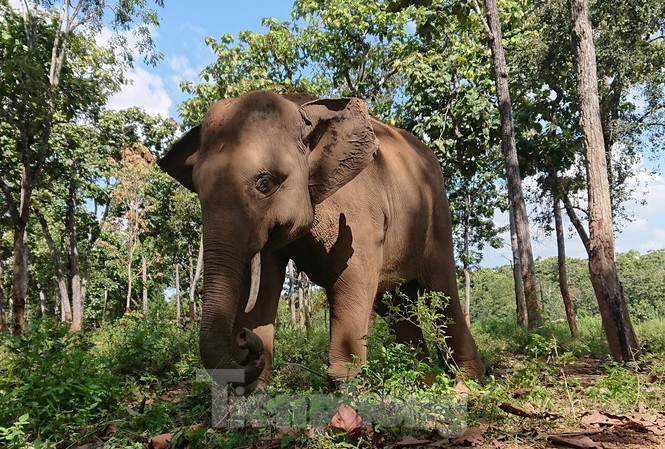‘Nanny’ elephant is understood as the female elephant which has reproduced at least once and is used to guide other females in the pregnancy period so as to help the females overcome their psychological problems.

According to the Dak Lak Elephant Conservation Center, there are 44 domestic elephants in the province, including 25 females and eight of which are in reproductive age used to increase the number of elephants.
In recent years, the number of elephants has been decreasing as elephants are getting old, while the number giving birth is modest.
The death of H’Ban, a ‘nanny’ elephant in early December, has rung the red alarm over the lack of nanny elephants in Dak Lak. There are only three elephants in the province which can act as nanny elephants.
Meanwhile, other elephants have been used to carry tourists and are tired because of overwork.
The changes in the habitat and the narrowing of the living environment have affected elephants’ reproductive capability. Like humans, elephants need favorable conditions to reproduce, and it is necessary to identify the exact ovulation date for male and female elephants to mate to conceive.
| The changes in the habitat and the narrowing of the living environment have affected elephants’ reproductive capability. Like humans, elephants need favorable conditions to reproduce, and it is necessary to identify the exact ovulation date for male and female elephants to mate to conceive. |
According to Y winh Eung in Lak district of Dak Lak province, who has 20 years of experience in breeding elephants and understands the habits of the animal, without ‘nannies', female elephants may have serious psychological problems during their pregnancy. In serious cases, both the mother and baby elephant may die after the birth.
Dak Lak district has three nanny elephants and five are in the reproductive age, the highest number in the province.
Huynh Trung Luan, director of the Dak Lak Elephant Conservation Center, said the center has been making every effort to protect the elephants and increase the number in the province.
The agency has drawn up a plan to build a habitat to preserve wild elephants aiming to provide a stable residence area for elephants in natural forests. This will help elephants feel comfortable and prevent attacks on local people’s forestlands and rice fields.
Many elephant owners in Dak Lak have restricted the use of domestic elephants in tourism as advised by the local authorities and experts. Elephants now only have to work several days every month.
In Dak Lak province, since 2011, there have been no reported cases of hunting elephants for ivory or meat, while the number of elephants dying from illness has also decreased significantly.
Thien Nhien

One more elephant in Dak Lak dies
A 59-year-old elephant in Dak Lak Province which carried tourists on sightseeing trips for many years has died, according to the provincial Elephant Conservation Centre.
 Dak Lak is considered the country’s ‘elephant metropolis with 140 elephants, both wild and domestic. However, the number of ‘nanny’ elephants there is alarmingly low, which has affected the conservation of the local herd of elephants.
Dak Lak is considered the country’s ‘elephant metropolis with 140 elephants, both wild and domestic. However, the number of ‘nanny’ elephants there is alarmingly low, which has affected the conservation of the local herd of elephants.